

Kids as young as 3 years old think YouTube is better for learning than other types of video. The Research Brief is a short take about interesting academic work.
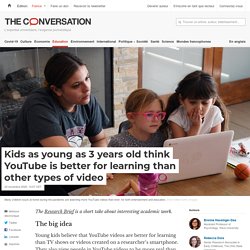
The big idea Young kids believe that YouTube videos are better for learning than TV shows or videos created on a researcher’s smartphone. There's A Big Difference Between Millennials And Generation Z. Lately, it seems the term “millennial” has morphed to mean any young person.
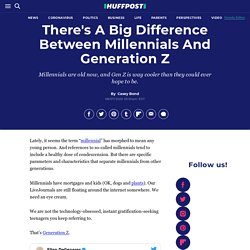
Secret Military Test, Coming Soon to Your Spanish Class - Issue 12: Feedback. Imagine a test that could tell you how good you can ultimately get in any foreign language, from Hindi to Welsh, from Igbo to Spanish, before you’ve even learned how to say “hello” or “please pass the butter.”

Très alléchant, non? Most adults would have to put in 10 years or more of dedicated work to find out if they have what it takes to end up with the vocabulary, accent, and grammatical sensibilities of a near-native speaker. This test could direct them from the début. And it may be coming your way soon. Emerging Tech Brew // 5G Guide. How COVID-19 Has Impacted Media Consumption, by Generation. View the high-resolution of the infographic by clicking here.
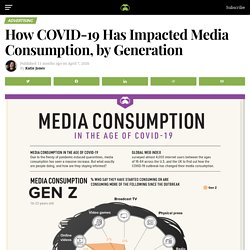
Since March of this year, the COVID-19 pandemic has forced millions of people to physically distance themselves from others, yet many feel closer to their loved ones than ever before. When it comes to brands, consumers have forged relationships that could be just as meaningful. In fact, consumers demonstrated a 23% increase in the number of brands they have an emotional connection with—so what does this mean for brands? The graphic above highlights data from MBLM’s Brand Intimacy COVID Study which measures how emotionally connected consumers in the U.S. are to the brands they use, and how brands can benefit.
How classroom technology is holding students back. In a first grade classroom I visited a few years ago, most of the six-year-olds were using iPads or computers.
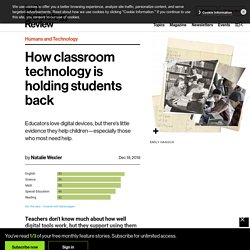
They were working independently on math problems supposedly geared to their ability, while the teacher worked separately with a small group. I watched as one boy, whom I’ll call Kevin, stared at an iPad screen that directed him to “combine 8 and 3.” (99+) (PDF) Humanidades Digitales. Retos, recursos y nuevas propuestas. China has started a grand experiment in AI education. It could reshape how the world learns. Zhou Yi was terrible at math.
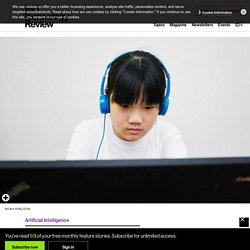
What I learned from studying billions of words of online fan fiction. When I was 10, I was a lonely, geeky girl, a first--generation Latina growing up in a small town in Indiana.
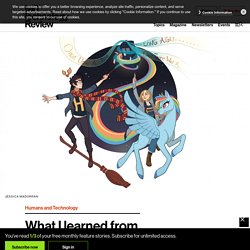
I happened across J.R.R. Tolkien’s fantasy trilogy, The Lord of the Rings, and immediately became enraptured by the richly woven world of elves, orcs, and small but heroic hobbits fighting against impossible odds to combat a powerful enemy. But one thing disturbed me: the lack of female characters. The main party of adventurers accompanying the hobbit protagonist, Frodo, didn’t contain a single female. Redes sociales en Educación Superior: Análisis de la situación actual y posibilidades educativas. Why Using a Period at the End of a Sentence Sounds So Angry. I recently received a request for some outstanding work that ended with the words “Many thanks.”

The period drove me insane. Had my associate written “Many thanks!” Imagination is such an ancient ability it might precede language. Imagination is intrinsic to our inner lives.
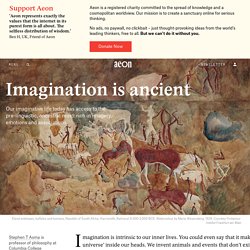
Rayuela. Pasatiempos del Aula de Lengua. Rayuela. Pasatiempos del Aula de Lengua. - Article. Español I. El ‘Instagram challenge’ para profesores. Integrating Tech: More Than Just Having Computers. Technology has become part of the educational process, but too often it is separate and not integrated into the learning experience.Today, Education World offers easy and painless ways to integrate technology into your daily routine. Included: Nineteen activities and nearly 50 Web sites. Integrating technology into the curriculum is a priority -- if not a mandate -- in most schools today.
Most educational technology experts agree, however, that technology should be integrated, not as a separate subject or as a once-in-a-while project, but as a tool to promote and extend student learning on a daily basis. The challenge, of course, is in finding ways to use technology -- and to help students use it -- that don't take time away from core subjects. For many teachers, a lack of personal experience with technology presents an additional challenge. Evaluating Technology Use in the Classroom.
Evaluating the use of technology in a classroom environment is not something most administrators are trained to do.
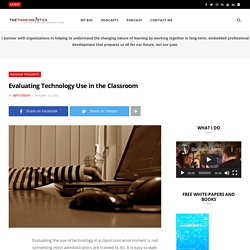
It is easy to walk into a classroom and see that every student is using a computer, but how do you really assess if and what type of learning is taking place? In the past, I have had administrators tell me “I walked into the teacher’s room and all the students were on laptops.” As though just the site of students working on laptops meant they were engaged in the learning process. I have been trying to wrap my head around a simple way for administrators to evaluate the use of technology in the classroom (a thank you to Dennis Harter who got me thinking about this). When most administrators evaluate teachers during the evaluation process, they have some sort of check sheet they are working from either mental or as part of a school’s evaluation process. [Let’s Make Communication Great Again] — How the Nature of Words Should Impact Your Communication. Now for the quote: “The finger pointing at the moon isn’t the moon.” It’s a great way to explain meta-physics, but it also accurately describes how words & language works.
Mukesh Ambani wants to be India’s first internet tycoon - India’s new Jiography. The classroom of the future. Entrevista olga juan Marcoele09. 20 annos TIC y ELE MarcoELE mcruz. TICS y ELE capitulo. 214. Pejovic y Andrijevic Porta Ling 2017. 1-s2.0-S2212017312000187-main. Gaved Peasgood Kukulska Hulme Luckin2018 section5.2. 20 annos TIC y ELE MarcoELE mcruz. Asesoría para el Uso de las TIC en la Información -SENA Asesoría para el Uso de las TIC en la Información -SENA. ED574949. Is the Era of Voice Texting Upon Us? Languageschool. What is "Language School 2.0" This project aims to analyze the impact of the use of ICT, specifically the iPad, in improving the learning of languages by students.
Erasmus+ is the EU's programme to support education, training, youth and sport in Europe. Its budget of €14.7 billion will provide opportunities for over 4 million Europeans to study, train gain experience, and volunteers abroad and it has opportunities for a wide variety of individuals and organisations. Integrando las nuevas tecnologías en el aprendizaje de un idioma extranjeroFuniber Blogs – FUNIBER. Sumo Un proyecto realizado en algunos países europeos estimuló la cooperación entre alumnos de la enseñanza secundaria de cuatro escuelas que estaban interesadas en mejorar las competencias en lengua extranjera. EDMEDIA 2018 teacher trainers Turkey 250618 jt. El aprendizaje autónomo a través de las redes sociales.
XXII Encuentro Práctico de profesores de ELE, Barcelona 2013. 20 y 21 de diciembre de 2013 Ver también: Los talleres simultáneos | Paneles El cine en ELE: una herramienta para la inmersión en la interacción de los hispanohablantes. 22_0019. 9780521803793_excerpt. The teaching of foreign languages and ICT. JavaScript is disabled on your browser. Please enable JavaScript to use all the features on this page. Abstract At present, there is a prime focus on the fields of knowledge in which citizens acquire the skills and knowledge necessary for effective communication, e.g. on the teaching of foreign languages and ICT. 19 HERRAMIENTAS PARA CREAR INFOGRAFÍAS PARA TUS CLASES. 19 HERRAMIENTAS PARA CREAR INFOGRAFÍAS PARA TUS CLASES. Technologies for foreign language learning: a review of technology types and their effectiveness: Computer Assisted Language Learning: Vol 27, No 1. Unlike in US, most European students learn a foreign language.
Students throughout the United States and Europe face many similar tasks throughout their education, from preparing for exams to writing papers. But there are glaring differences when it comes to foreign language education – or lack thereof – and the result is that far lower shares of American students study a foreign language. Learning a foreign language is a nearly ubiquitous experience for students throughout Europe, driven in part by the fact that most European countries have national-level mandates for formally studying languages in school. No such national standard exists in the U.S., where requirements are mostly set at the school district or state level.
Across Europe, students typically begin studying their first foreign language as a required school subject between the ages of 6 and 9. Furthermore, studying a second foreign language for at least one year is compulsory in more than 20 European countries. Topics: Education, Language. Children learn best when engaged in the living world not on screens. ICT IN ENGLISH LANGUAGE TEACHING AND LEARNING. 9780521803793_excerpt. 21st Century Essential Skills Resources.